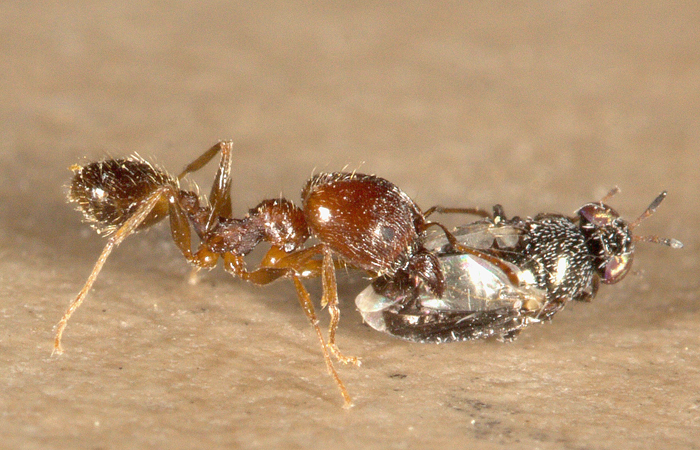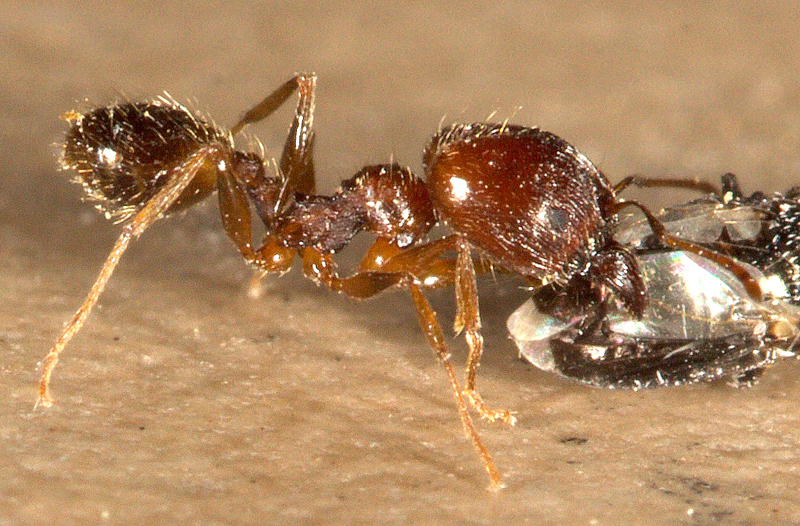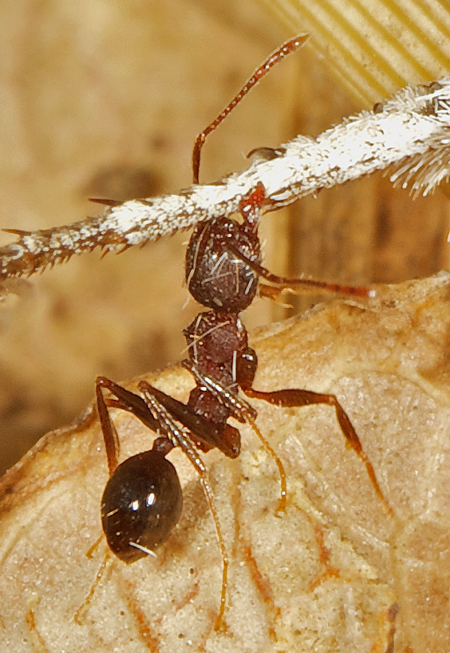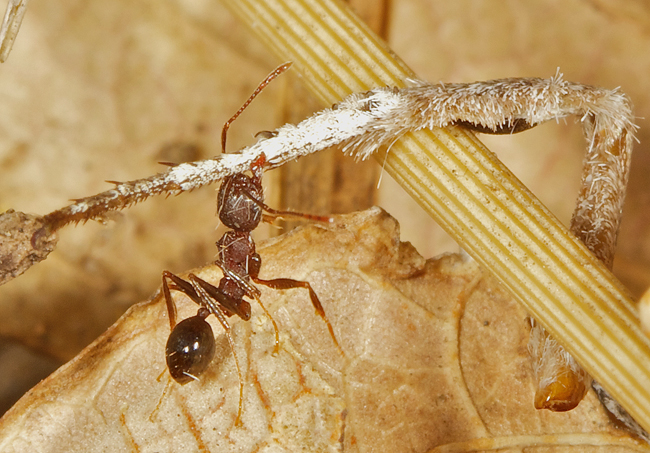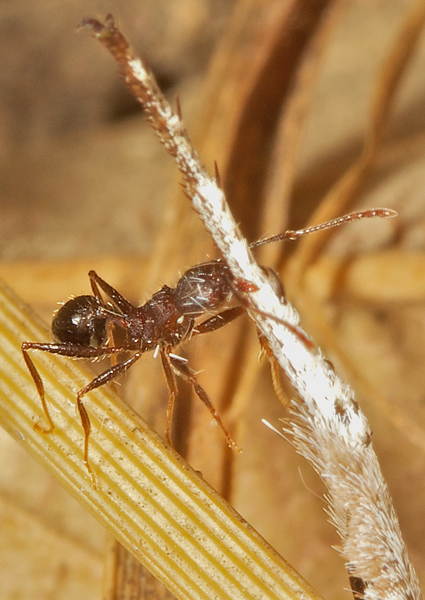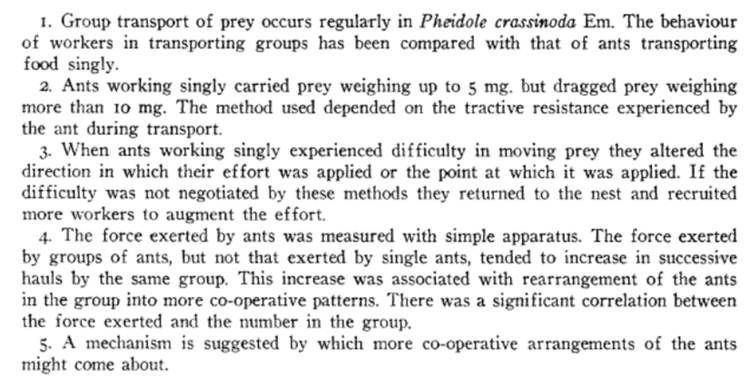Hotrod Ant Ocymyrmex fortior (Santschi, 1911)
Family Formicidae. Subfamily Myrmicinae. Tribe Crematogastrini
Ants of this genus move very swiftly and erratically, faster than any other ants as noted by Arnold and other observers. Additionally, they are active in the hottest part of the day.
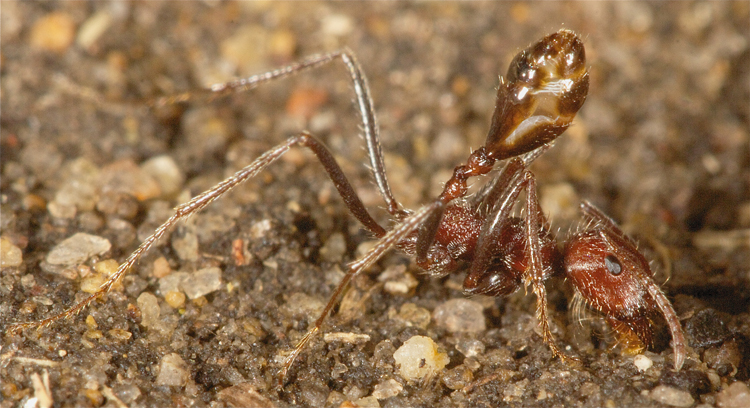
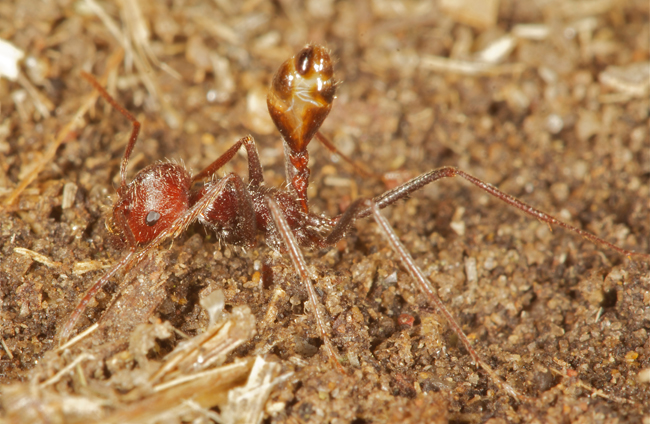
Kruger Natl Park
by ExF
One of the most widespread species in southern Africa and in prevailingly grassy areas of the Kruger National Park, South Africa, this species is quite common.
Identification (
a more complete description can be found in the link below*)
Ant Anatomical Terminology:
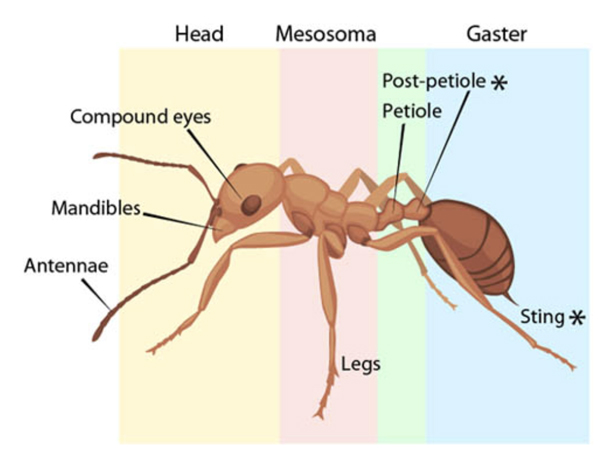
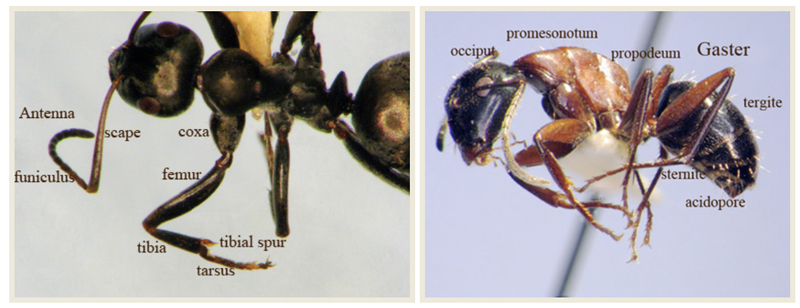 O. fortior
O. fortior worker description:
~Anterior clypeal margin with a semicircular median impression which is flanked on each side by a small tooth or denticle.
~ Promesonotal dorsum evenly shallowly convex in profile, the convex portion not strongly raised above the level of the propodeum so that the slope of the posterior half of the mesonotum is very shallow indeed. Propodeal dorsum flat or slightly sloping, rounding evenly into the declivity, the slope of which is quite steep but by no means vertical.
~Peduncle of petiole commonly without a ventral process but quite frequently a low rounded bulge is present. Petiole node small and low in profile, evenly rounded, the transition from dorsal surface of peduncle to anterior face of node involving a marked change of slope. Petiole node in dorsal view slender, small, varying from longer than broad to slightly broader than long.
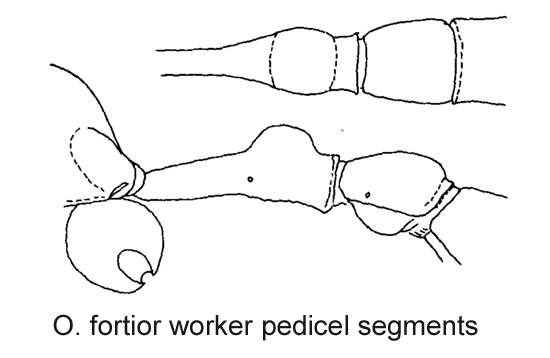
~Postpetiole in dorsal view longer than broad, sometimes only slightly so, but usually the difference easily visible. Postpetiole only with a superficial patterning or more or less smooth.
~Base of first gastral tergite strongly constricted and forming a narrow neck behind the postpetiole.
~Ground-sculpture of fine punctulation is present everywhere.
~All dorsal surfaces of head and alitrunk with hairs of varying length, the hairs of the first gastral tergite much shorter and sparser than on the alitrunk.
~Head and alitrunk varying from dull brick-red to lighter red, the two always the same colour; gaster darker, blackish brown to black.
Among the
Ocymyrmex species with a strongly constricted base to the gaster and a developed clypeal impression,
fortior is defined more by its lack of specialized characters than the possession of them.
Distribution
Afrotropical Region: Angola (type locality), Botswana, Namibia, South Africa, Zambia, Zimbabwe.
Biology
Workers of
fortior close the nest entrance with small stones during periods of nest inactivity. Also, in Zimbabwe,
fortior workers have been seen adding small stones to the crater-like nest entrance that were picked up from the around some distance away from the nest. This suggests that the crater is not just a by-product of the nest excavation but an important feature of the nest entrance. Its function is not fully understood, but its presence may facilitate the deliberate blocking of the entrance.
http://antsofafrica.org/ant_species_201
*
https://www.antwiki.org/wiki/Ocymyrmex_fortior
https://www.antwiki.org/wiki/images/d/d ... h_1989.pdf
